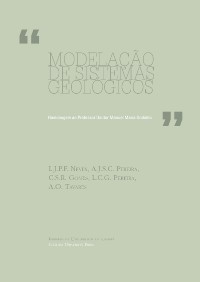Please use this identifier to cite or link to this item:
https://hdl.handle.net/10316.2/36296| DC Field | Value | Language |
|---|---|---|
| dc.contributor.author | Bolacha, Edite | |
| dc.contributor.author | Deus, Helena Moita de | |
| dc.contributor.author | Dias, Rui | |
| dc.contributor.author | Fonseca, Paulo | |
| dc.date.accessioned | 2015-04-08T09:03:59Z | |
| dc.date.accessioned | 2020-09-09T13:30:33Z | - |
| dc.date.available | 2015-04-08T09:03:59Z | |
| dc.date.available | 2020-09-09T13:30:33Z | - |
| dc.date.issued | 2011 | - |
| dc.identifier.isbn | 978-989-97106-0-3 | |
| dc.identifier.isbn | 978-989-26-1009-2 (PDF) | |
| dc.identifier.uri | https://hdl.handle.net/10316.2/36296 | - |
| dc.description.abstract | Establishing relations between what is observed in the field and what can be modelled, in an analogue fashion, in the laboratory, is a practice long applied in the construction of geologic knowledge. This methodology has been developed for the past two hundred years and, lately, it has evolved significantly. For this, and several other reasons, it is believed that analogue modelling could and should be used as a teaching strategy, in the field of Geology, whether it is used in a formal or informal setting. This teaching tool enhances the need to discuss time and space scales, as these issues become part of the discussion about the models limitations. Most of the time, in the field, the true dimension of these two variables can only be inferred from the geologic materials or phenomena under investigation. Early results obtained from analogue modelling of mountain formation, with subduction, are presented here. All these experiments are applicable to several school degrees, as well as in informal teaching environments. The objective behind these activities is to model the genesis and evolution, during the Upper Paleozoic, of an important sector of a portuguese paleogeographic area, called the “South Portuguese Zone”. These experiments study several variables that influence the generation and evolution of an accretionary wedge, such as the nature of the materials, the angle of a pre-existing mountain range and the lithostatic pressure. Observing and understanding geological structures in the field, and establishing relations between them and the same phenomenon, at a different scale, is something that can be done through analogue modelling. This happens when connections are made between processes and structures that develop simultaneously, at distinct scales of observation. | eng |
| dc.description.abstract | A relação entre o que se observa no campo e o que se tenta reconstituir através da modelação análoga é uma tarefa antiga na construção do conhecimento geológico, que foi sendo aperfeiçoada desde há dois séculos até hoje. Por esta, e outras razões que apontamos, ela revela-se também importante como estratégia e metodologia em qualquer nível de Ensino (formal e não formal) da Geologia, permitindo reconstituir fenómenos e processos humanamente inacessíveis no Tempo e no Espaço, só inferidos a partir das estruturas e materiais geológicos. Propomos apresentar alguns (dos) resultados preliminares de experiências de modelação análoga na formação de cadeias de montanhas sob influência da subducção susceptíveis de serem utilizadas na Divulgação e no Ensino da Geologia. Estas experiências têm como finalidade a interpretação da formação e evolução, durante o Paleozóico superior, de um importante sector de uma zona paleogeográfica do território português – a Zona Sul Portuguesa. Nos trabalhos desenvolvidos testaram-se alguns parâmetros que influenciam o tipo de estruturas associadas a evolução dos prismas acrecionários, tais como o tipo de materiais, o ângulo de inclinação de parte da cadeia já formada ou a pressão litostática. A observação e compreensão das estruturas observadas no campo e a sua relação com o fenómeno a outra escala -a formação da cadeia de montanhas-, é algo que pode ser realizado por meio da modelação análoga, interrelacionando processos e estruturas que se desenvolvem ao mesmo tempo em escalas de observação distintas. | por |
| dc.language.iso | por | - |
| dc.publisher | Imprensa da Universidade de Coimbra | por |
| dc.publisher | Laboratório de Radioactividade Natural da Universidade de Coimbra | por |
| dc.relation.ispartof | http://hdl.handle.net/10316.2/36282 | por |
| dc.rights | open access | - |
| dc.subject | Analogue modelling | eng |
| dc.subject | Geology of Portugal | eng |
| dc.subject | South Portuguese Zone | eng |
| dc.subject | Geology teaching | eng |
| dc.subject | Modelação análoga | por |
| dc.subject | Geologia de Portugal | por |
| dc.subject | Zona Sul Portuguesa | por |
| dc.subject | Ensino da geologia | por |
| dc.title | Modelação análoga de um episódio da Geologia de Portugal | por |
| dc.type | bookPart | por |
| uc.publication.firstPage | 125 | - |
| uc.publication.lastPage | 140 | - |
| uc.publication.location | Coimbra | por |
| dc.identifier.doi | 10.14195/978-989-26-1009-2_9 | - |
| uc.publication.section | Parte II: Modelação de sistemas geológicos | por |
| uc.publication.digCollection | PB | por |
| uc.publication.orderno | 9 | - |
| uc.publication.area | Ciências Naturais | por |
| uc.publication.bookTitle | Modelação de sistemas geológicos: livro de homenagem ao Professor Manuel Maria Godinho | - |
| uc.publication.manifest | https://dl.uc.pt/json/iiif/10316.2/36296/209118/manifest?manifest=/json/iiif/10316.2/36296/209118/manifest | - |
| uc.publication.thumbnail | https://dl.uc.pt/retrieve/11148171 | - |
| uc.publication.parentItemId | 54495 | - |
| uc.itemId | 69859 | - |
| item.fulltext | With Fulltext | - |
| item.grantfulltext | open | - |
| Appears in Collections: | Modelação de sistemas geológicos: livro de homenagem ao Professor Manuel Maria Godinho | |
Files in This Item:
| File | Description | Size | Format | |
|---|---|---|---|---|
| modelacao_analoga_de_um_episodio.pdf | 2.14 MB | Adobe PDF |  |
Items in DSpace are protected by copyright, with all rights reserved, unless otherwise indicated.
